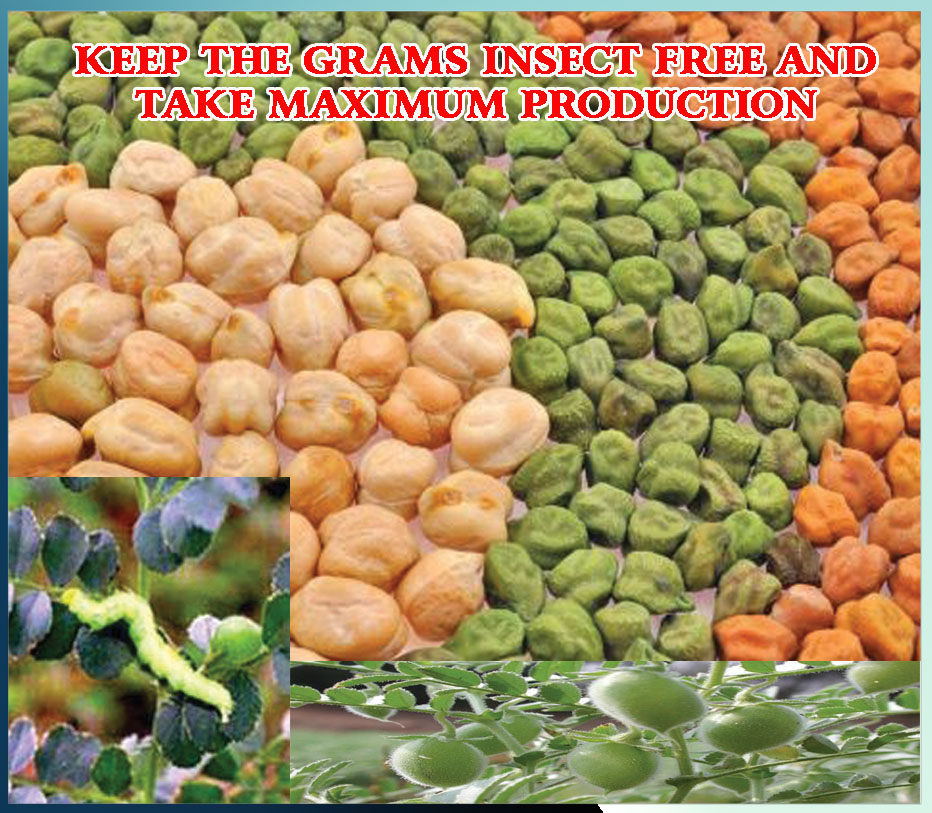Chickpea (Gram) is the main Rabi pulse crop. Being the pulse crop, it is the main source of protein for nation wide vegetarian population.
Being less area for lthe Chikpea (Gram), it is necessary to increase the production of this crop.
One of main reason for less production of Chickpea (gram) is that it gets infected easily. During the full crop season, it is attacked 50 times by different insects. Mainly termite,cut worm or katuasundi, cheap and phalichedak sundi insects attack.
Only one insect phalichedak itself destroys 50% of the crop. So the farmers have to keep identifying seeing the condition of the chickpea (gram) crop, the insects attacking the crop and take all preventive measures so that maximum output can be achieved.
Take timely preventive measures from the attack of insecticides in Chickpea Termite.
The attack of this insect is usually on light sandy land with a little humid climate. In addition to sowing and germination stage, this insect attacks the ready crop even. This insect attacks the roots of the crop and thus the plants get dried. To safeguard this, all the remains of the previous crops should be taken out fully and never use cow dung Fertilizer. The seed treatment before the sowing also plays an important role to save the Crop from insecticides till the end.
Table of Contents
Cutwork or Katuasundi
Bahubakshi is the insect that destroys the chickpea (gram) crop. It attacks the midst of stem of growing plant and branches of grown up plants. In the day light katua sundi goes inside the land and in the night it attacks the plants. As a preventive measures from this insect 20 EC phenvelrate 80 ml, Sahpermenit 25 EC 50 ml, Deckamathrine 2.8 ml be mixed in 100 litres per acre, and be sprinkled or 10 kg phenvelrate powder be sprinkled.
Phalichedak Sundi
This is the main insect to harm the chickpea (gram) crop. Phalichedak sundi is having green and yellow strips which first attacks the leaves and kalis (small flower). This attacks on the crop when the gram crop is starting making phalis. Its attacks are less in winter but by arrival of spring, the attacks increase. In the beginning of spring, this insect eats the seeds of the gram in the phalis. To identify this you can see when the sundi is eating the seeds of gram in phalli, it is half inside and half outside the phalli.
This affects badly the crop of gram. In its full life span, it eats and destroys 30- to 40 phalis. To have prevention from phalchedak sundi, focus on the economic borderline insecticides, and do not spray one type of insecticides because the insects develop the resistance power for that particular insecticide.
Hence use mixture of the insecticides and thus prevent it from the attack. If at the time of sowing the chickpea (gram), mustard and wheat is also sown, the possibility of attack of chickpea(gram) is minimized. You can take away phalichedak sundi in the fields, by hands. The crop which have the worst effect of phalichedak sundi, dig the land and fix the wooden pillars there so that the birds sit their and eat phalichedak sundi.
In the case of need, as a preventive measures we can use Kwinalphos 25 EC 400 ml, monocrotophos 30 SL 200 ml, or Phenvelrate 20 EC 80 ml, Sahparmathrain 35 EC 50 ML or Decomathraine 2.8 EC 150ml, that may be mixed in 100 litres of water per acre and sprinkle it. One of the insecticides be sprayed when the crop has got 50% PHALI.
Farmers can be benefited financially by identifying the attacks of the insects and prevent plants timely and thus attain the increased production of Chickpea (Gram).
– KHUSHVEER MOTHSARA
Follow us on Facebook, Twitter, LinkedIn and Instagram, YouTube to get more updates related to Sachi Shiksha – The Famous Spiritual Magazine in India.












































